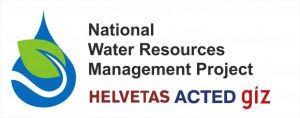Bobuchak village in Tajikistan: An inspiring example of community-led disaster risk mitigation

How ACTED trained villagers in Tajikistan to prepare for natural disasters
In reaction to a natural disaster risk assessment conducted in the village of Bobuchak, ACTED, together with Helvetas and GIZ, adopted an original approach to reduce risks and build preparedness of the community.
Bobuchak is a small rural mountainous village, located in the middle part of the Ak-Suu watershed (altitude-1799m) in Rosrovut Jamoat of Devashtich district, in Tajikistan. According to the results of the natural disaster risk assessment conducted in the village, Bobuchak can be considered as at high risk of disaster. In fact, it is highly vulnerable to mudflows, which every year cause damage to households, social facilities, and livestock. All in all, the village houses 513 people.
As part of a national water resources management project, ACTED, Helvetas and GIZ developed a community-based approach to improve watershed management and reduce the risks of disaster. To this end, ACTED provided a series of training sessions directly to community members, involving them in restoration works as demonstration models, so that they could apply in practice the skills and knowledge received during the trainings. This allowed them to execute the mitigation activities planned for reducing the risk of disasters, using improvised inexpensive means.

Pledging risk reduction through direct involvement of the local population
In April 2016, the population of Bobuchak village decided to set-up a living palisade by planting native seedlings and shrubs such as elm trees and dog rose as a fence and by placing water tanks for their irrigation, due to the limited water available in the village. All the required works were executed by community members themselves, using the means readily available in the village, such as stones, seedlings, shrubs and wire. Moreover, members of community-based organizations set up a series of activities to involve school children in the gardening and watering of the seedlings. In this way children can observe the restoration process, and through the direct observation they can understand the root causes of mudflows and the irrational use of natural resources.

Nonetheless, the measures implemented are still not sufficient to reduce the risk of mudflows in the village. Moreover, such interventions should be carried out on a yearly basis, because after mudflows, rubbles tend to cover everything. Building up on the work of villagers and on the deep assessment, ACTED decided to implement in August 2016 two additional mitigation projects in this village: “Bank protection” and “Rehabilitation of mud channel”. These have significantly reduced the risk of natural disasters for 109 households, schools, a medical centre, as well as a tea house and a mosque.
It is crucial to directly involve the local population in the process so that they can understand by doing the meaning of what is happening. Why do mudflows become worse every year in the village? What are the main reasons for their occurrence? What should be done to reduce disaster risk? Directly involving local population in the project implementation, in particular women, teenagers and the elderly, was pivotal for building the capacity of the community members in disaster risk reduction.
By implementing integrated mitigation projects with restoration components in Bobuchak, ACTED not only aims to reduce the vulnerability of the villagers, but also to provide an example and inspiration for the conduction of restoration activities in neighboring villages with similar or high risk of disaster.

